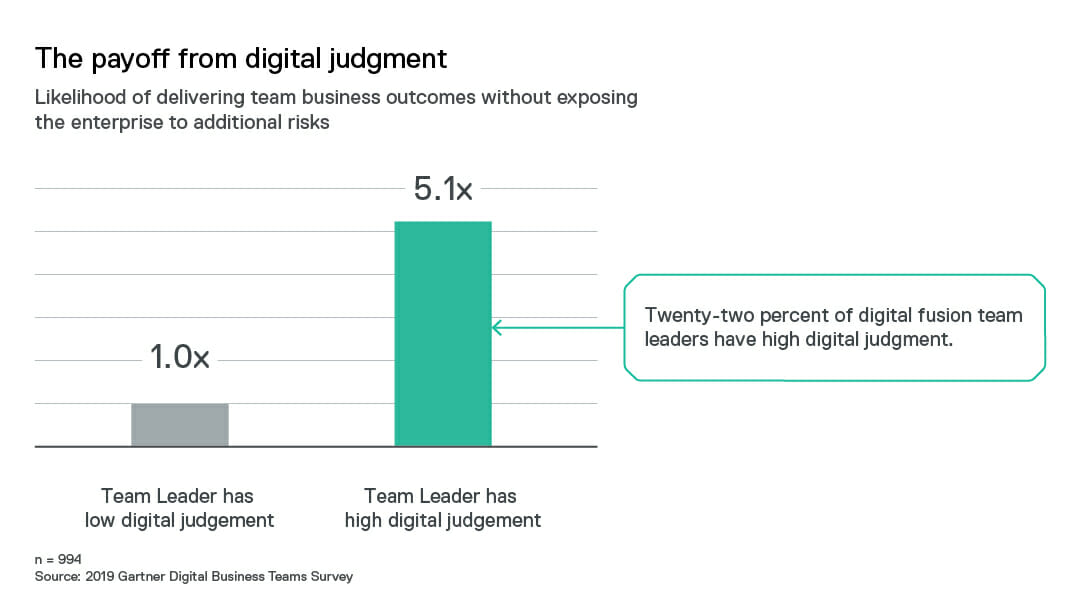PBCs
How Fusion Teams Will Define the Future of Business
Digital transformation is taking place at an ever-quickening pace. In order to remain technologically competitive, all organizations benefit from adopting the practices of digitally native companies. One such way of achieving this is through embracing fusion teams.

Jump to section
What are fusion teams?
Benefits of fusion teams
Potential disadvantages of fusion teams
The future of business – Avoiding pitfalls with fusion teams
Products which further streamline fusion teams
—
Collaborative, multidisciplinary teams are not a new feature of the modern workplace. For many years, interdepartmental collectives have worked together to address organizational obstacles and create solutions. Particularly as the use of technology has increased, members of IT teams have frequently collaborated with other departments to offer digital fixes.
These collaborations have only become more commonplace as time goes on, and will continue to be necessary in future. Digital transformation – which sees physical processes replaced by digital alternatives – is now adopted at a quickening pace, with an ever-widening range of issues and tasks being solved by tech solutions.
To keep up with this progression, companies need to adopt new ways of working. Time and efficiency are of the essence, ensuring new digital products and services are developed within crucial time periods, before competitors, and to meet customer demand. In order to stay up to date, all organizations benefit from adopting the practices of digitally native companies. One such way of achieving this is through embracing fusion teams.
What are fusion teams?
Fusion teams go hand-in-hand with agile culture, often starting out as agile or scrum teams. Similarly to cross-functional teams of the past, they use data and tech to achieve business outcomes. Although they rely on tech to produce their work, 40% of their team leads report to business leaders outside of technology departments, evidencing the acceleration of digital in many areas of business.
Fusion teams differ from other interdepartmental groups in one major way; where cross-departmental teams would not normally deploy the projects they work on, fusion teams buck this trend. Consisting of all of the talent necessary to create a working, viable product, they regularly possess the ability to deploy their creations directly to consumers. In this way, fusion teams are often tasked to produce products rather than projects.
Through this method of working, these teams operate under the model of distributed digital delivery; digital expertise are not only distributed more efficiently throughout the organization, but tasks, responsibilities, and projects are also distributed throughout the company to run simultaneously. This allows for the bypassing of the managerial layer between project orchestration and deployment, eliminating the potential bottlenecks frequently experienced when sign-off takes place through one central team.
Benefits of fusion teams

The rise of fusion teams has been noticeable in the last few years, with Gartner reporting that 84% of businesses already contain at least one. Their increasing popularity stands as testament to the benefits these setups bring, some of which include:
Rapid digital transformation
As detailed above, fusion teams are emerging as a way for companies to keep up with the rapid pace of digital transformation. By removing interdepartmental checking processes and middle management, which would traditionally oversee larger projects and create bottlenecks in project development, products can be deployed approximately two and half times faster.
Greater autonomy to team members
Fusion teams offer greater autonomy to those within them, which is often a key driver to generating commitment and personal responsibility. Team members are given freedom to react to threats and opportunities as they arise, as well as produce products based on the approaches they believe perform best. Although autonomy is embraced, responsibility is also shared amongst the team; there is not a single department or individual who can be blamed if a product is late or doesn’t work – the team takes the hit. The efforts of the individual and the benefits of effective teamwork are both fostered via fusion teams.
Distribution of knowledge
By engaging regularly with colleagues who would ordinarily be employed in separate, rigidly structured departments, multidisciplinary teams allow for know-how to be better distributed throughout the company. They maximize knowledge flow within an enterprise, and allow colleagues to naturally learn from each other. Information which would otherwise be outside of their ordinary day-to-day activities is made accessible via such setups.
Potential disadvantages of fusion teams
In order for organizations to remain digitally savvy and competitive, the introduction of fusion teams is in some ways inevitable. It’s important, however, to be aware of potential pitfalls which may arise from these newer team structures. Some disadvantages worth keeping in mind include:
Team leaders require “digital judgment”
Coined by Gartner, “digital judgment” is the ability for fusion team leaders to regularly deliver strong outcomes whilst avoiding risks, regardless of their willingness to adhere to company-wide governance. In other words, these leaders successfully produced low-risk digital products, even if their processes sometimes went against company-sanctioned procedures.
Gartner found that team leaders possessing this quality were 5.1 times more likely to deliver outcomes without exposing the company to risk. It’s important to note, though, that only 22% of those Gartner researched possessed good digital judgment.

May create talent silos
As much as fusion teams allow for knowledge sharing, it’s important individual learnings are shared outside of a specific squad to ensure continued company-wide benefit. Not every member of a fusion team will be a tech expert, meaning they often rely on a multitude of low-code solutions to create products, these varying widely from team-to-team. Therefore, the potential for learning, whilst cycling through a host of out-of-the-box solutions, is huge. Without adequate knowledge sharing, the processes undertaken and lessons learnt from one team will remain within their silo and not benefit the company at large.
Difficulties in communication
In the same way talent can be siloed, communication at large can suffer. CIOs and other business leaders are sometimes concerned with the autonomy fusion teams offer, particularly when it comes to utilizing solutions which do not adhere to governance. Their rapid pace of development means all decisions simply can’t be communicated. This can expose the company to risks.
The future of business – Avoiding pitfalls with fusion teams
With their benefits, and (to a large degree) necessity, fusion teams appear to be a no-brainer when it comes to the future of effective business. They present one of the smartest team setups for organizations that are serious about keeping apace with technological developments. But how can you implement them without compromising on successful output?
Gartner offers three tips for avoiding potential pitfalls in embracing a fusion team setup:
Allow fusion team leads to help develop business governance
70% of fusion team leaders believe their company’s existing governance standards apply only to IT, but not their teams’ work. By allowing fusion team leads to participate in discussions which determine business governance, learning can take place from both parties as to how standards are best implemented. In their discussions with compliance experts, fusion team leads learn more about the potential risks and trade-offs that come with not following best practice. This way, best practice can also be affected bottom-up, with team leads contributing their own knowledge to what should be considered appropriate working practices. This advances digital judgment in all parties, overall strengthening the likelihood of successful product launches.
Develop an enterprise-wide digital workforce strategy
Creating a company-wide digital workforce strategy defines how tech talent is hired and distributed throughout your organization, alleviating the possibility of digital talent silos. The strategy should be employed to ensure digital employees, although working in separate fusion teams, are still in communication with one another to ensure best practices are communicated and followed. HR should work with functional leaders within the company to develop this process. Keeping in mind how the rise of digital talent in the organization is an inevitability, planning how to handle this growth is an essential step in gaining the most from it.
Embed digital leadership in all aspects of the company
As digital transformation marches on, tech will need to be embedded in all aspects of business leadership. With digital solutions utilized by more departments, companies benefit by ensuring leaders of all sectors, not just fusion team leads, possess digital judgment which minimizes organisational risk. As the acceleration of technology only increases, companies which do not invest in adequate digital knowledge company-wide will likely pay the price in missed opportunities and failed products.
Products which further streamline fusion teams

Organizations may benefit from implementing fusion teams, but this can be taken one step further by offering easy access to specific functionalities and applications. The coupling of streamlined working groups and microservice technologies allow for one of the most effective rates of digital transformation to take place within organizations.
Packaged Business Capabilities (PBCs), as offered by Spryker, can assist in further increasing the efficiency of the work carried out by fusion teams. These packaged solutions allow businesses to rapidly scale up key functionalities by offering the ability to tap into the specific microservices they offer. PBCs bypass the need for companies and teams to rework applications in a monolithic approach, with their easy-to-tap-into modules lending themselves well to the fusion team setup.
The exposed APIs which are offered by PBCs can also be utilized to combine components and capabilities, offering opportunities to solve business issues in an effective and fast way. APIs allow fusion teams to effectively explore, test, and learn about capabilities that exist across the tech stack.
An example of PBCs further streamlining the work of fusion teams can be seen in Ally Bank, which created PBCs representing various capabilities, including alerts against fraud. Fusion teams took these PBCs and assembled them without the need for hours of coding, saving around 200,000 hours of manual effort.
By the same token, Spryker’s PBCs can be utilized by your own in-house teams, fusion or otherwise, to allow rapid implementation of new functions and features. This ability to remain agile and deploy new products at a competitive pace will, in the near future, prove crucial to a company’s survival.
Would you like to learn more about how Spryker’s PBCs can save your team from hours of additional work? Contact our sales team today!